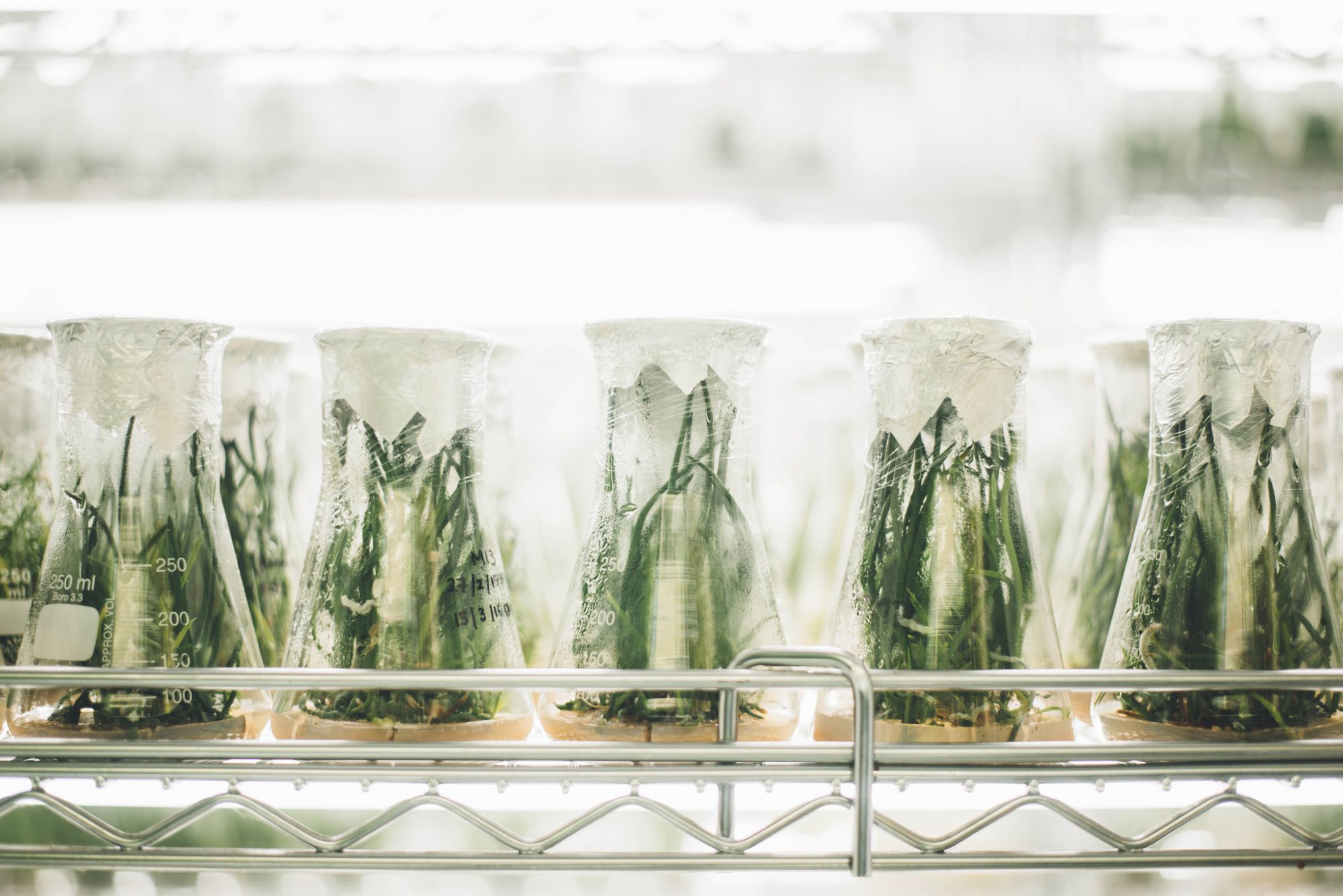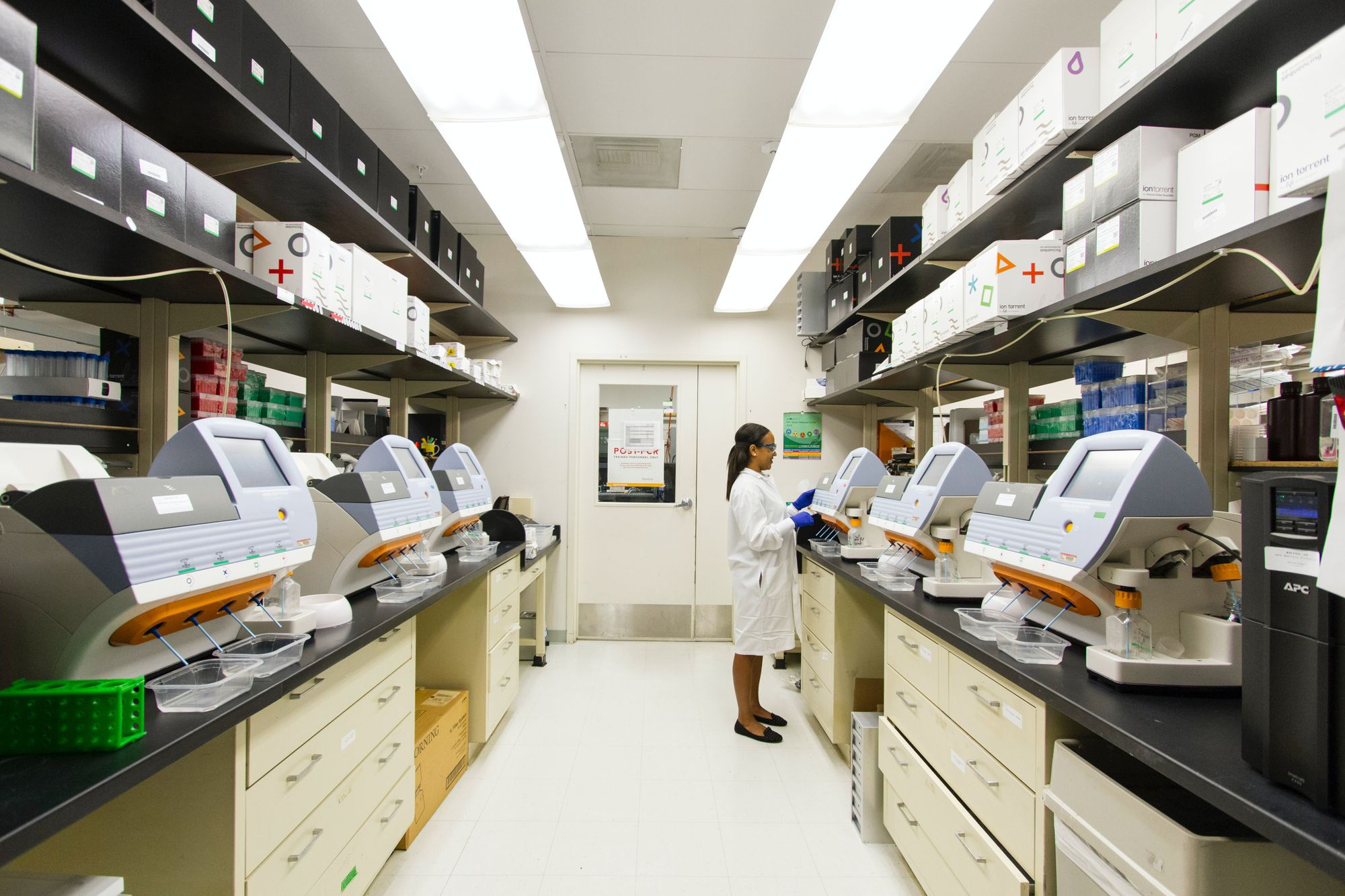Science has always been built on innovation because it is all about discovery. If our conceptions of biology, physics, chemistry, and other fields had not changed since they were first developed, we would not have made any new discoveries and our understanding of people and the world would not have advanced.

Scientific advancements depend on our ability to innovate, which enables us to think differently about an issue.
This article covers the following:
- What is life science innovation?
- What are some of the benefits of life science innovation?
- What are the challenges in life science?
- What are the new innovations in life science?
- Life Science Innovation and Business
- Growth of Life Science Innovation
- The Future of Life Science Innovation
- The Impact of Life Science Innovation
What is Life Science Innovation?
Life science innovation is the process of using scientific knowledge and technological advancements to create new products, services, and processes that help promote human health and well-being.
Life science innovation has the potential to revolutionize the healthcare industry, improve quality of life, and foster economic growth. It is a process that involves the collaboration of scientists, engineers, healthcare practitioners, and business executives to develop solutions to help people live longer and healthier lives.
Companies and organizations involved in life science innovation are actively researching, developing, and launching medical devices, pharmaceuticals, and diagnostic tools that help diagnose and treat diseases, as well as prevent them from occurring.
Additionally, life science innovation has also opened up new avenues in the fields of medical robotics, genomics, and artificial intelligence, which are expected to further improve the quality of life for patients around the world.
What are Some of the Benefits of Life-Science Innovation?
Life science innovation is drastically changing how we study, diagnose, and treat health conditions. As life science technology rapidly advances, many researchers and healthcare providers are leveraging the latest breakthroughs for the benefit of their patients. Here are some of the key benefits of life science innovation:
Improved Diagnoses
With the help of life science innovation, medical practitioners are now able to diagnose illnesses with greater accuracy and precision. For example, genetic testing and imaging techniques are allowing doctors to identify diseases earlier and more accurately, leading to better treatment outcomes.
More Effective Treatments
With the help of life science innovation, medical practitioners now have access to treatments that are more effective than ever before. From personalized medicines to advanced surgical techniques, life science innovation is providing doctors with the tools they need to treat patients with greater efficacy.
Better Quality of Life
Life science innovation has enabled the development of treatments and therapies that improve the quality of life for those suffering from a wide range of illnesses. For example, advances in stem cell research have made it possible to treat certain types of cancer more effectively, while 3D printing technology has opened the door to personalized prosthetics and orthotics.
Reduced Cost of Care
Life science innovation has made healthcare more affordable for patients. By using technology to streamline processes and reduce costs, healthcare providers are able to pass the savings on to their patients.
Overall, life science innovation is having a positive impact on patient care. With improved diagnoses, more effective treatments, a better quality of life, and reduced cost of care, life science innovation are proving to be a valuable asset in healthcare.
Agricultural
Life-science innovation has improved crop yields and increased food safety, as well as enabling the development of new breeds of animals and plants. It has enabled the use of genetic engineering to create more nutritious foods, as well as the use of biotechnology to combat crop diseases.
Industrial
Life-science innovation has enabled the development of new products and processes, such as biodegradable plastics and energy-efficient lighting. It has also enabled the development of new manufacturing methods and materials, such as 3D printing, which is revolutionizing the way products are designed and produced.
What are Some of the Challenges in Life-Science Innovation?
Innovation in life sciences is an incredibly important field, as it provides the potential to drive medical breakthroughs, improve healthcare delivery, and develop new treatments and cures for diseases.
However, innovation in life sciences is also a field that comes with its own challenges. One of the biggest challenges in life science innovation is the cost of development. Developing and testing new treatments and therapies can be incredibly expensive, and the cost of bringing a new drug to market can easily run into millions of dollars.
This can make it difficult for smaller companies and research groups to enter the field of life science innovation, as they may not be able to afford the cost of development. Additionally, the cost of development can be a major barrier for governments and other organizations that may wish to fund research and development in the field of life science innovation.
Another major challenge in life science innovation is the time it takes to develop new treatments and therapies. Developing a new treatment or therapy can take many years, as it requires extensive testing and research.
This can mean that treatments or therapies may take years to reach the market, which can be a major barrier for those who are in need of a particular treatment or therapy. Additionally, the long timeline for development can make it difficult for companies to plan for the future, as they may not know when a particular therapy or treatment may be approved. Finally, there is the challenge of regulation.
Life sciences are a highly regulated field, as there are many safety and ethical concerns that must be taken into consideration. In order to ensure that products are safe and effective, they must go through a rigorous process of testing and review.
This can be a major barrier for companies, as they may have to wait for a long period of time before their product can be approved for use. Additionally, the process of obtaining approval can be expensive, as companies may have to invest in research and development in order to meet the requirements of regulatory agencies.
In conclusion, there are many challenges in life science innovation. From the high cost of development to the long timeline for product approval, these challenges can be a major barrier for companies and organizations who wish to enter the field of life science innovation.
However, by overcoming these challenges, life science innovation can provide tremendous benefits, as it can lead to new treatments and therapies that can improve the lives of many.
What are Some of the New Innovations in Life Science?
Life science is an expansive field, and new innovations are constantly emerging. Here’s a look at some of the most exciting developments in life science that are revolutionizing the way we understand and interact with the world around us.
CRISPR-Cas9 Technology
CRISPR-Cas9 is a revolutionary gene-editing technology that has the potential to revolutionize medicine. This technology has already been used to successfully treat a variety of diseases, including sickle cell anemia, muscular dystrophy, and cystic fibrosis. In the future, it could be used to not only treat existing diseases but also to help prevent them by editing out disease-causing genes.
Synthetic Biology
Synthetic biology is a field of study that involves creating artificial, living organisms from scratch. This could include creating bacteria that could produce medicines or fuels or creating new organisms never seen before. While still in its early stages, this technology has the potential to revolutionize the way we approach disease and environmental issues.
Lab-Grown Organs
Researchers are now able to grow fully functional organs in the lab using a patient's own cells. This could make organ transplants much easier and more accessible, as well as potentially save the lives of countless people waiting for an organ donation.
3D Printing
3D printing has already been used to create a variety of medical devices, ranging from prosthetics to implants. This technology has the potential to revolutionize the way medical devices are created and used while also making them more affordable and accessible.
Artificial Intelligence
Artificial intelligence has the potential to revolutionize the way we diagnose and treat disease. AI algorithms are being used to quickly process vast amounts of data to detect patterns and diagnose diseases much faster than ever before. It could also be used to create personalized treatments for individual patients, allowing for more accurate and effective treatments.
These are just a few of the many advances in life science that are revolutionizing the way we understand and interact with the world around us. As these technologies continue to evolve and become more accessible, we’ll be able to tackle even more complex problems and make even more meaningful strides in the life sciences.
Life Science Innovations & Business
Life science innovation has the power to revolutionize the way we live. From new treatments for diseases to advanced medical technologies, life science innovation has a huge potential to improve the quality of life for people around the world. But for life science innovation to truly make an impact, it must be supported by businesses and investors who have the resources and expertise to scale and market these solutions.
Businesses play an important role in driving life science innovation. By providing valuable resources, such as capital, access to technology, and expertise, businesses can help life science innovators develop and commercialize their products.
In addition, businesses can also provide market intelligence, helping innovators understand their target markets and craft effective strategies for launching their products. Investors are also important for life science innovation.
By investing in life science innovation, investors can help innovators get their products to market quicker and bring value to the market faster. Investors can also help innovators identify new markets and opportunities for their products, as well as provide valuable advice and feedback on product development.
Finally, partnerships between businesses, investors, and innovators are critical for life science innovation. By bringing together a diverse group of stakeholders with different perspectives, expertise, and resources, partnerships can help life science innovators create and launch products that have the potential to make a real difference in people’s lives.
Life science innovation can have a profound impact on society, and businesses and investors have an important role to play in advancing innovation. By providing resources, market intelligence, and strategic advice, businesses and investors can help bring life science innovations to the market and make a real difference in people’s lives.
Growth of Life Science Innovation
The world of life science innovation is constantly evolving and growing. Every day, researchers are making breakthroughs that are changing the way we live and interact with our environment.
From advancements in medical treatments and cures to advancements in environmental protection and sustainability, life science innovation has been a major driver of progress in the 21st century.
In recent years, the growth in life science innovation has been particularly remarkable. Advances in biotechnology, genetics, and bioengineering have allowed us to create new treatments and therapies, develop new materials and products, and gain insights into the complexities of living organisms.
We now have the capability to manipulate the genetic code of living organisms, allowing us to develop new cures and treatments for a range of diseases and disorders.
We can now produce new materials for a variety of applications, from medical devices to sustainable energy sources. And perhaps most importantly, we have gained a better understanding of how living organisms interact with their environment and can now use this knowledge to develop new ways of protecting and preserving the environment.
The growth of life science innovation has also been driven by the increasing affordability of technology and the rise of the “maker movement.” With the advent of 3D printing and low-cost, open-source software, it has become much easier and more affordable for individuals to create and develop new products and technologies.
This has allowed small companies, universities, and individual entrepreneurs to get involved in the life science innovation space, creating new products and services that have the potential to revolutionize the way we live.
Finally, the growth of life science innovation has also been driven by increased investment and support from the public and private sectors. Governments have invested heavily in research and development, as well as in the creation of new regulatory frameworks to support the commercialization of new products and services.
Private companies have also invested heavily in the life sciences space, providing capital for new startups and research initiatives. As a result of all of these factors, the life science innovation space is now more vibrant and dynamic than ever before.
We are now seeing the development of treatments and cures for a range of diseases and disorders, new materials and products, and new ways of protecting and preserving the environment.
We are also seeing the emergence of new startups, incubators, and accelerators that are helping to foster the next generation of life science innovation. All of these developments are helping to ensure that the life science innovation space continues to grow and evolve in the years to come.
Future of Life Science Innovation
The future of life science innovation is bright and full of potential. The advances in biotechnology, nanotechnology and artificial intelligence are creating a new world of possibilities for the life sciences.
With the help of these powerful tools, scientists can create new treatments and therapies for a wide range of diseases and conditions, leading to better health outcomes for patients.
The advent of gene editing technologies, such as CRISPR-Cas9, has allowed scientists to make precise changes to the DNA of cells, unlocking new potential in the life sciences.
With gene editing, scientists can create new treatments and therapies that are tailored to the individual patient, leading to better outcomes. In addition, gene editing can also be used to create genetically-modified crops and animals that are more resistant to disease and pests, leading to greater yields and lower costs for farmers.
Advances in artificial intelligence and machine learning are also helping to revolutionize the life sciences. AI-driven algorithms can analyze vast amounts of data quickly and accurately, allowing scientists to make more informed decisions about treatments and therapies.
AI can also be used to detect patterns in data that may be too complex for the human mind to identify, allowing for the discovery of new drugs and treatments. The potential of life science innovation is far-reaching, as new technologies and techniques are being developed and implemented every day.
In the future, scientists will be able to use gene editing, artificial intelligence, and other tools to create treatments and therapies that are more precise and effective than ever before. With the help of these powerful tools, the life sciences will continue to evolve and provide better health outcomes for patients.
Impact of Life Science Innovation
Life science innovation has had a profound impact on the way we live and interact with the world around us. From advances in medical treatments and diagnostics to advancements in agricultural technology, life science innovation has revolutionized the way we approach and interact with the environment and the world around us.
One of the most significant advances in life science innovation has been the development of medical technology. In the past, medical treatments were limited to procedures that were invasive and often difficult to access.
However, with the advent of new technologies, such as artificial intelligence and robotics, medical treatments have become much more accessible and effective. For instance, robotic surgery has allowed for minimally invasive procedures that can be completed with great precision and accuracy.
This has drastically improved the quality of care in many medical procedures and has greatly reduced the costs associated with some surgeries. Another major advancement in life science innovation has been the development of genetic engineering techniques.
These techniques have allowed for the manipulation of the genetic makeup of plants, animals, and even humans. This has enabled scientists to create new and improved food sources, as well as treatments for diseases that were previously thought incurable.
This has had a major impact on the way we approach and treat diseases, as well as the way we produce food. Finally, life science innovation has also made a major impact on the environment.
Advances in biotechnology have enabled scientists to create new and improved forms of energy, such as solar and wind energy. This has greatly reduced the amount of pollution that is produced and has led to a much cleaner environment.
Additionally, advances in biotechnology have also allowed for the production of biofuels that can be used as a sustainable source of energy. Overall, life science innovation has had a profound impact on the way we live and interact with the world around us.
From advances in medical treatments and diagnostics to the development of genetic engineering techniques and the creation of renewable energy sources, life science innovation has had a major positive effect on the environment and the way we approach and interact with the world around us.
How Can Deskera Assist You?
Whether you are a sales manager or running your own business, there are tons of duties and responsibilities that you have to fulfill. Using the Deskera CRM system, you can manage your contacts, leads and sales deals. You can use the CRM system to manage all customer data and manage your leads, sales negotiations and deals.

Related Articles:











